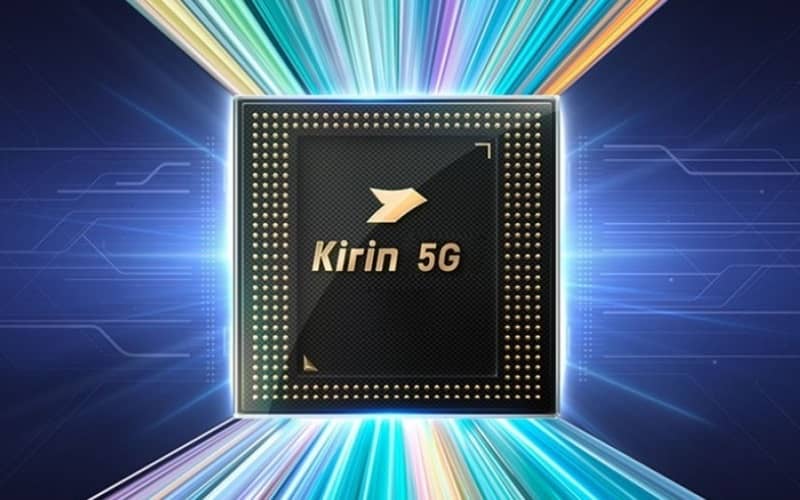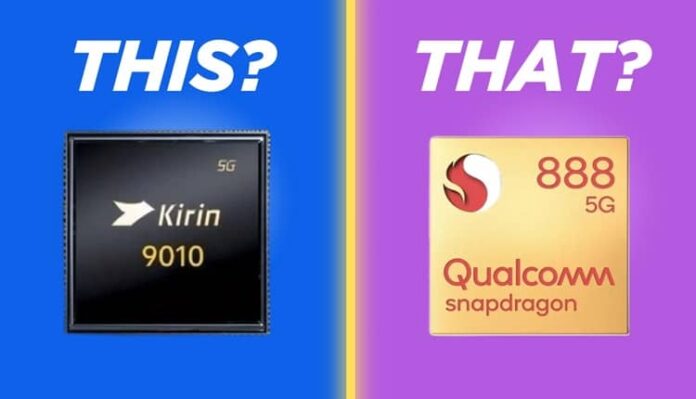In this comparison, we’re taking a close look at Huawei’s Kirin 9010 and Qualcomm’s Snapdragon 888. While the Kirin has already shown its worth against the Snapdragon 8 Gen 3, this time it’s up against the Snapdragon 888, a chipset that’s been around for three years. Let’s dive straight into Kirin 9010 vs Snapdragon 888 without any delay.
Table of Contents
Kirin 9010 vs Snapdragon 888 Comparision table:
| Feature | Kirin 9010 | Snapdragon 888 |
|---|---|---|
| Process Node | 7nm (SMIC) | 5nm (Samsung) |
| CPU Cores | 1 x 2.3 GHz Taishan Big | 1 x 2.84 GHz Cortex-X1 |
| 3 x 2.18 GHz Taishan Mid | 3 x 2.42 GHz Cortex-A78 | |
| 4 x 1.55 GHz Cortex-A510 | 4 x 1.8 GHz Cortex-A55 | |
| GPU | Maleoon 910 @ 750 MHz | Adreno 660 @ 792 MHz |
| RAM | – | Up to 24GB LPDDR5 @ 3200 MHz |
| 5G | Yes | Yes |
| Download/Upload | – | Up to 7500 Mbps/3000 Mbps |
Amidst the comparison, it’s crucial to consider the broader context surrounding Huawei’s Kirin 9010. Due to ongoing sanctions imposed by the United States, Huawei has faced significant challenges in sourcing essential components and accessing advanced technologies for its chip development. These sanctions have directly impacted Huawei’s ability to compete on a level playing field with its competitors, including Qualcomm.
Despite these hurdles, Huawei has continued to innovate and develop its Kirin series of chipsets, such as the Kirin 9010. However, uncertainties regarding future developments and access to key technologies remain a concern for Huawei and its flagship chipset offerings.
Kirin 9010 vs Snapdragon 888 Overview:
The Snapdragon 888, manufactured on a 5nm process node by Samsung, has been a prominent player in the flagship smartphone market for several years. Meanwhile, Huawei’s Kirin 9010, produced on a 7nm process node by SMIC, enters the scene with high expectations but faces skepticism due to its benchmarking performance.
Performance:
While the Kirin 9010 boasts impressive specifications, including its CPU configuration and 5G capabilities, the Snapdragon 888’s utilization of a 5nm process node gives it an edge in power efficiency and performance. With higher clock speeds across all CPU cores, the Snapdragon 888 exhibits better handling of intensive tasks.

GPU Performance:
Although the Kirin 9010’s Mali-G78 GPU operates at a lower clock speed compared to the Snapdragon 888’s Adreno 660, benchmarking tests such as the 3DMark Wild Life Extreme reveal competitive performance between the two chipsets.
Benchmark Results:
Benchmark scores can provide insights into a chipset’s theoretical performance. According to AnTuTu and Geekbench v6 scores, the Kirin 9010 marginally outperforms the Snapdragon 888 in some tests. However, real-world performance may vary based on factors such as software optimization and thermal management.
| Benchmark | Kirin 9010 | Snapdragon 888 |
|---|---|---|
| AnTuTu v10 | 972,547 | 892,658 |
| Geekbench v6 (Single-core) | 1,446 | 1,498 |
| Geekbench v6 (Multi-core) | 4,524 | 3,948 |
| 3DMark Wild Life Extreme | 1,531 | 1,498 |

Final Verdict:
While both the Kirin 9010 and Snapdragon 888 are formidable contenders in the mobile chipset arena, the Snapdragon 888’s utilization of advanced technology and proven track record gives it a competitive edge. Additionally, Huawei’s lack of transparency regarding the Kirin 9010’s specifications raises questions about its true capabilities.
In conclusion, while the Kirin 9010 showcases Huawei’s technological prowess, the Snapdragon 888 remains the preferred choice for those seeking top-tier performance and reliability in their smartphones. As always, it’s essential to consider various factors, including personal preferences and device ecosystem, before making a decision.
- Also, check out these featured articles,
What are your thoughts on Kirin 9010 vs Snapdragon 888? Let us know in the comments below.







